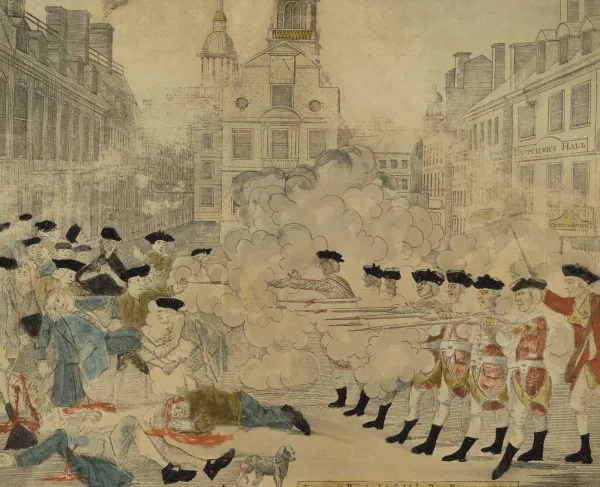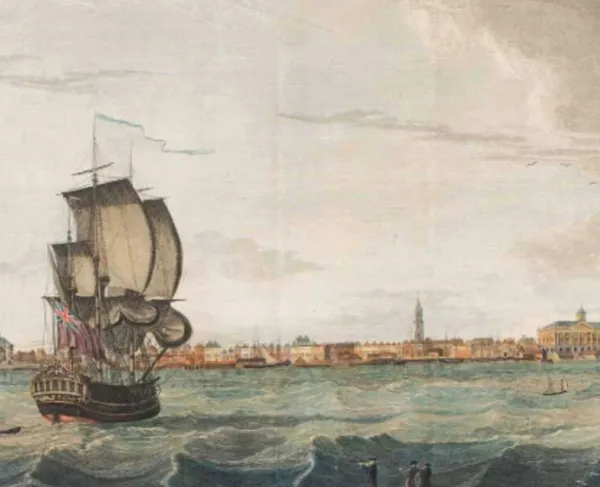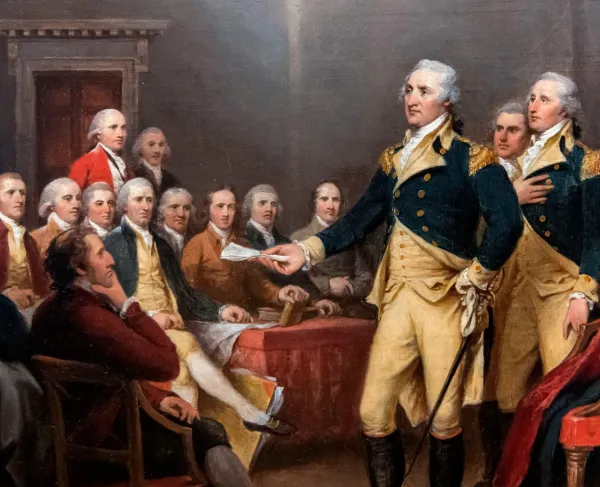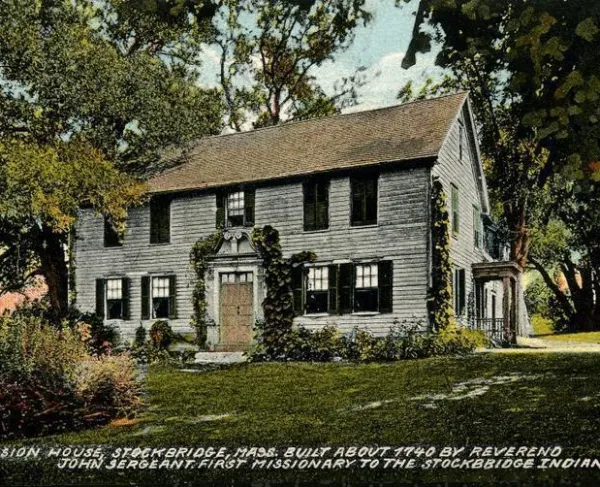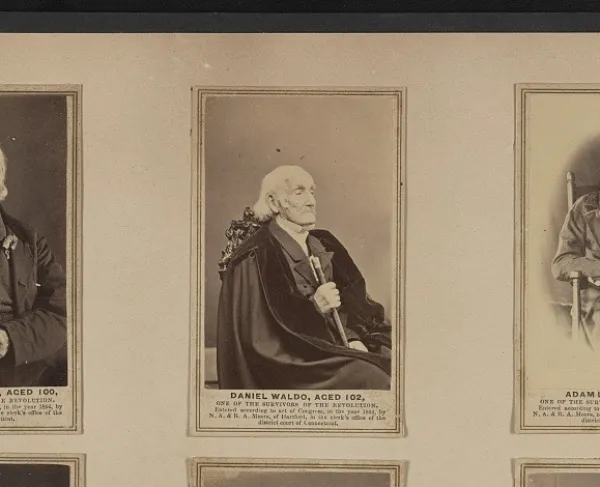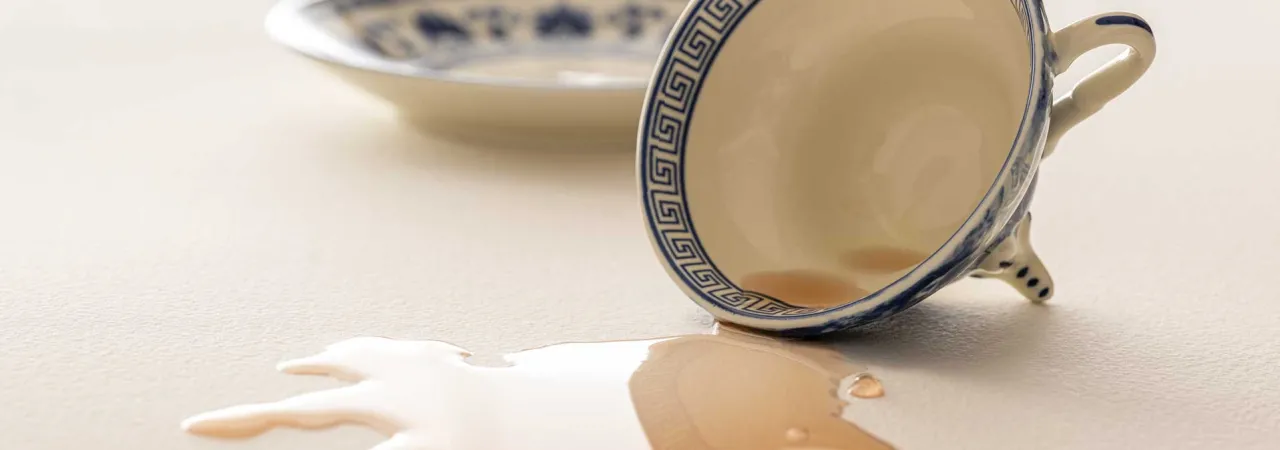
The town meeting held in Boston on the night of December 16, 1773, at the Old South Meeting House was no ordinary gathering. Such events were a foundation of the political process for Massachusetts and most of the New England colonies, with leaders calling residents together to discuss important political, economic and social decisions facing the city or colony. Royal authorities had watched these meetings more closely since the 1760s, during opposition to the Stamp Act, as colonial Whigs (anti-royal leaders) had used them to protest British policies they saw as threats to their liberties.
This town meeting was a follow-up assembly to previous meetings held in November and was meant to occur in Faneuil Hall. The large turnout, however, required the crowd to move to the more spacious Old South Meeting House: Nearly 5,000 came to discuss the city’s and colony’s responses to a new tax on tea and, more directly, the ships in the harbor that held tea from the East India Company. The colonial Whigs did not want the cargo unloaded, but the captains of the ships could not leave the harbor with the tea unless they had approval from the governor. Conversely, Governor Thomas Hutchinson did not believe he had the authority to allow the ships to leave without unloading the tea. Added to this, Hutchinson was more than frustrated with those who had rejected royal authority over the years. Thus, a legal and theoretical standoff ensued. That night, the people of Boston took the matter into their own hands.
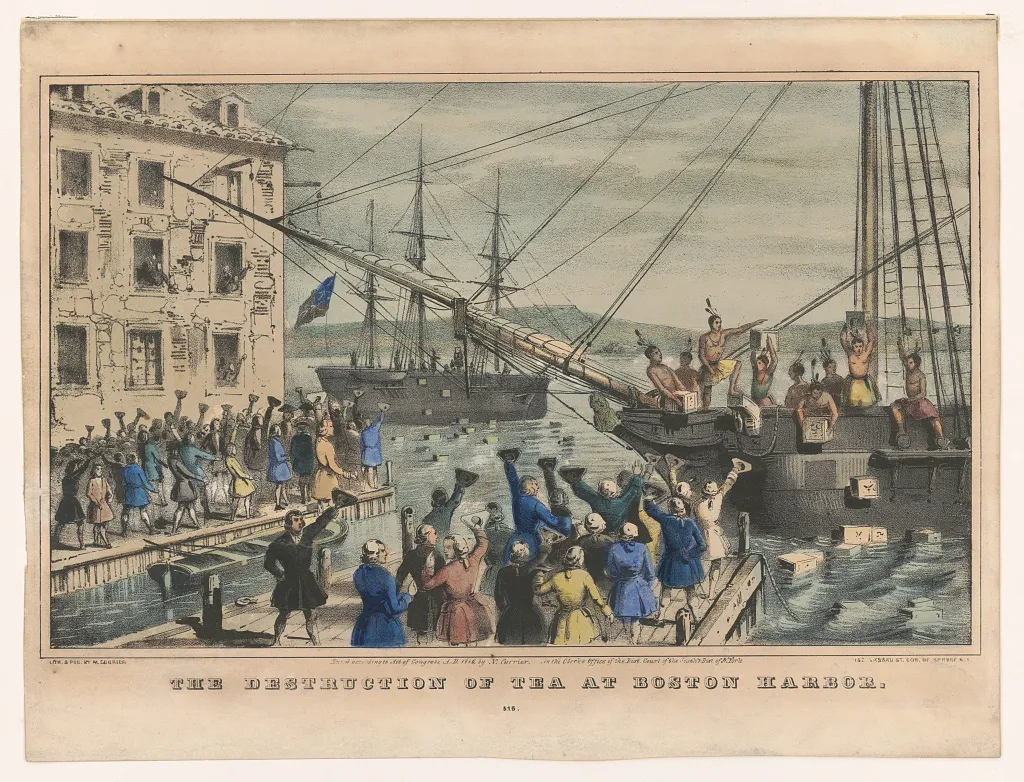
On the surface, the Tea Act of 1773 was rooted in helping pay off the debt of the British Empire incurred from its recent, global war with France. Also, the revenue raised would pay British officials in the colonies, thus making them more loyal to Parliament and the British Crown. It was one of many parliamentary laws, or acts, passed to raise revenue in the colonies. Its underlying purpose , however, was to allow Parliament to display its authority to pass laws that were binding on the British colonies. Due to colonial opposition and resistance, many of these acts were repealed; like its predecessors, the Tea Act sparked an immediate response throughout the colonies.
The Tea Act was also seen as a mode for saving a British-held company, the British East India Company. Before 1773, the company had to sell its tea in London and was subject to duties. It had collected large quantities of tea in London warehouses and was looking for a way to dispense with it cheaply. The Tea Act allowed the company to sell directly to American ports without paying duties. This also forced American buyers to purchase their tea, which was subject to a tax from the East India Company. The good news was the price of tea was reduced because the company no longer had to pay the duties in London, but colonists resisted the notion that Parliament could force them to buy tea from one supplier (many made a good living off smuggled tea sales) and that they were also required to pay a tax on it.
The popular refrain of “taxation without representation” had been around since the 1750s and became well-known in 1764 in response to the highly unpopular Sugar Act and 1765 Stamp Act. Colonial Whigs believed they had no representation in Parliament because they did not elect representatives to Parliament. British political theory and law believed in the model of “virtual representation,” which meant that although the colonists did not vote for individual members of Parliament, that body as a whole acted in the best interest of all British subjects. Colonial leaders, who for decades were allowed to vote for their representative bodies in their respective colonies, did not accept this theory. The opposing views on representation began to open opposition to British authority over colonial matters.
Though passed in May 1773, the Tea Act did not impact the people in the colonies until fall. Seven ships of tea were sent to four American ports, Boston, New York, Philadelphia and Charleston. Meanwhile, colonial Whig leaders began to organize a resistance to the East India Tea that was en route. In fact, in every other city but Boston the tea was refused and was either forced to be returned to England or confiscated by local officials. It was in Boston that a determined governor and a history of opposition to the monarchy led to a singular event in American history.
On November 28, the Dartmouth arrived loaded with tea in Boston Harbor. British law gave ships with imports 20 days to pay the duties, or the local customs officials could confiscate the cargo. Hutchinson, when petitioned, would not allow the ship to leave the port without paying the duty. His sons, who acted as the tea consignees (authorized to receive the tea and see to its distribution) for Boston, also refused to back down and resign their positions, which had happened in other American ports. Soon, two more ships, the Beaver and the Eleanor, arrived with more unwanted tea. Unable to return the tea to England, and unable to unload the tea due to the threats of local groups such as the Sons of Liberty, the captains of the ships were in a tight and dangerous spot.
When the public gathered at the Old South Meeting House that December evening in 1773, they were regaled with speeches by Sam Adams, John Hancock, Joseph Warren and other Boston Whig leaders, calling for a return of the tea to England. Later in the evening, word came that a last-minute plea to Governor Hutchinson to let the ships return was refused. Sam Adams announced publicly, “This meeting can do nothing further to save the country.”
The events that happened next have been debated since 1773: Soon after Adams’s statement, men arrived outside the meeting house disguised as Mohawk Indians. Whether or not these men were signaled to move toward the ships with tea is unknown. As they marched down Milk Street to Griffin’s Wharf, where the three ships holding tea were docked, the thousands gathered inside the Old South Meeting House began to pour out of the building. Chants of “Boston a teapot tonight!” and “Hurrah for Griffin’s Wharf!” were reportedly heard. Some followed the men in disguise; others continued to protest in the streets, while still others headed home, believing that a confrontation was about to take place.
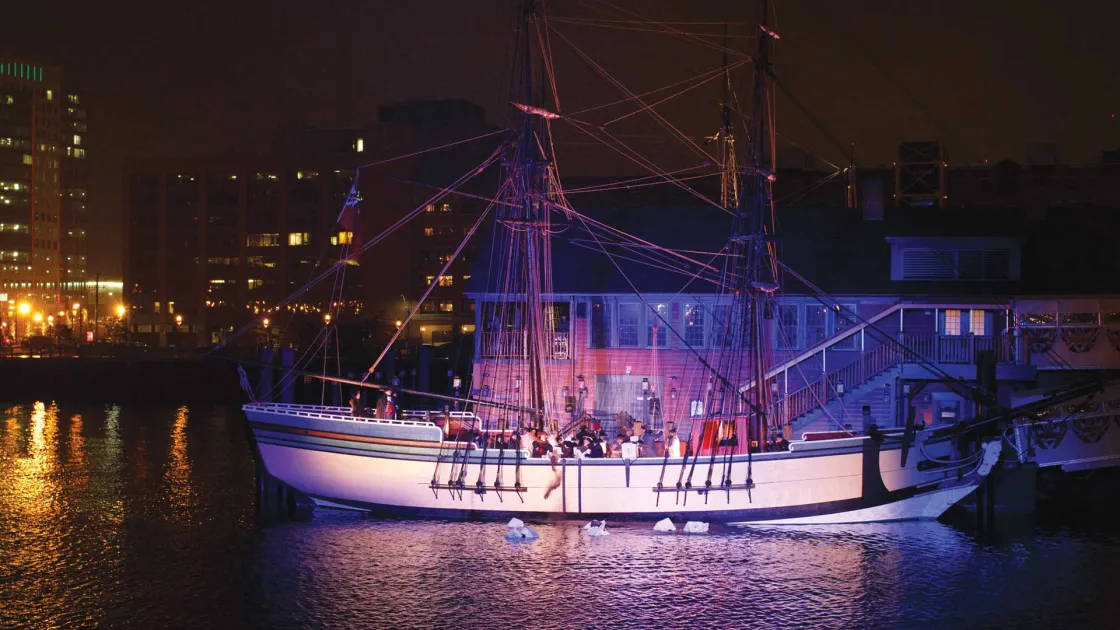
Many details remain unknown about who exactly the “Mohawks” were that marched on Griffin’s Wharf that night. The men used lamp soot and red ochre to disguise their faces and carried a wide assortment of weapons. As they made their way to the wharf, they yelled and whooped, attempting to imitate Native Americans in a war party. If they had coordinated with leaders in the Old South Meeting House, it is still unknown. The identities of most of these men either were never recorded or are lost to history; that is how tight their veil of secrecy was, coupled with sophisticated organization. As they made their way to the ships, the Whig leaders inside the Old South Meeting House stayed behind and were never directly part of what happened next.
The men, with a crowd behind them, approached the wharf. There they divided into three groups, one each for the Dartmouth, Beaver and Eleanor. Having lived and worked in a port city, most of the men knew where to find the cargo they were looking for and how to operate on a ship. Thus, most of the other cargo and private property on the ships was not touched: They were only after the tea. After the chests were hauled onto the deck, they were broken open and dumped into the harbor. Some of the men watched to make sure no one tried to steal any of the tea being dumped. The approximately 150 men worked quickly as the crowd of spectators grew.
Ultimately, some 340 chests of tea weighing 92,000 pounds were destroyed that December night. The British East India Company reported the lost cargo was worth £9,659 — the equivalent of $1,700,000 in today’s dollars. A fourth tea ship bound for Boston that had run aground near Cape Cod had its cargo salvaged, taxed and sold privately. When the Sons of Liberty discovered the warehouse where that tea was being stored the following March, they destroyed it too. Learning that some was already for sale at a Boston shop, they again donned their Mohawk garb to break in and dump the last vestiges of the shipment in the harbor. Meanwhile, the ships bound for New York and Philadelphia returned to London without offloading their cargo, although the tea ship that arrived in Charleston met its own dramatic fate.
The American Revolution did not just “happen.” It was the culmination of various events and acts that individually did not guarantee separation, but one can retroactively see how they led to the inevitable. The Boston Tea Party was one of these events; it gave the tinder box of revolution in America more fuel and many believe this small incident lit the fuse leading to open war between colonies and mother country, because this time Great Britain would respond in a way it never had before. The spark came 16 months later, on Lexington Green.
